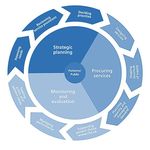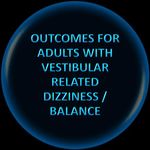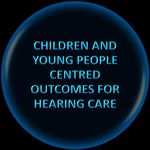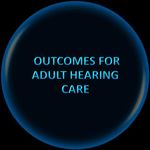Commissioning Services for People with Hearing Loss: A framework for clinical commissioning groups - NHS ...
←
→
Page content transcription
If your browser does not render page correctly, please read the page content below
Commissioning Services for
People with Hearing Loss:
A framework for
clinical commissioning groups
1OFFICIAL
NHS England INFORMATION READER BOX
Directorate
Medical Commissioning Operations Patients and Information
Nursing Trans. & Corp. Ops. Commissioning Strategy
Finance
Publications Gateway Reference: 05533
Document Purpose Guidance
Commissioning Services for People with Hearing Loss: A Framework
Document Name
for Clinical Commissioning Groups
Author NHS England, Office of the Chief Scientific Officer
Publication Date 18 July 2016
Target Audience CCG Clinical Leaders, CCG Accountable Officers, CSU Managing
Directors
Additional Circulation Foundation Trust CEs , Medical Directors, Directors of PH, Local
List Authority CEs, NHS Trust Board Chairs, NHS England Regional
Directors, NHS England Directors of Commissioning Operations, Allied
Health Professionals, GPs, Directors of Children's Services, NHS Trust
CEs
Description This framework supports Clinical Commissioning Groups to make
informed decisions about what is good value for the populations they
serve and provide more consistent, high quality, integrated care. It also
addresses inequalities in access and outcomes between hearing
services.
Cross Reference
N/A
Superseded Docs
N/A
(if applicable)
Action Required
N/A
Timing / Deadlines
N/A
(if applicable)
Contact Details for Sonia Fleming
further information Office of the Chief Scientific Officer, Medical Directorate
Skipton House
80 London Road
SE1 6LH
england.cso@nhs.net
Document Status
This is a controlled document. Whilst this document may be printed, the electronic version posted on
the intranet is the controlled copy. Any printed copies of this document are not controlled. As a
controlled document, this document should not be saved onto local or network drives but should
always be accessed from the intranet.
2OFFICIAL
Document Title Commissioning Services for People with
Hearing Loss: A Framework for Clinical Commissioning
Groups
Version number: 1
First published: 18 July
Updated: N/A
Prepared by: Professor Sue Hill, Chief Scientific Officer, Cathy Regan, Associate
Consultant, Primary Care Commissioning (with advice and contributions from the
hearing loss commissioning framework advisory and working groups / adult and
children services subject expert groups, and the Hearing Loss and Deafness
Alliance).
Classification: (OFFICIAL)
This information can be made available in alternative formats, such as easy read or
large print, and may be available in alternative languages, upon request. Please
contact 0300 311 22 33 or email england.contactus@nhs.net.
3OFFICIAL
Contents
Contents ..................................................................................................................... 4
1 Foreword ............................................................................................................. 5
2 Equality and Health Inequalities Statement ......................................................... 6
3 Introduction.......................................................................................................... 7
4 Why we need a Commissioning Framework for Hearing Services .................... 12
5 What Matters to People with Hearing Loss........................................................ 16
6 Principles for Commissioning Hearing Services ................................................ 17
7 Planning Hearing Services ................................................................................ 19
8 Securing Hearing Services that Deliver Improved Outcomes and Value ........... 26
9 Monitoring for Quality Improvement .................................................................. 38
10 Commissioning Models – Case Studies ............................................................ 40
11 Moving Forward ................................................................................................. 43
Acknowledgements .................................................................................................. 44
Appendices 1- 9........................................................................................................ 45
References ............................................................................................................... 73
4OFFICIAL
1 Foreword
By Professor Sue Hill OBE, Chief Scientific Officer for England
Hearing problems are a growing challenge across society with over nine million
people in England living with some form of hearing loss which impacts on their ability
to fully participate in society. The scale of this issue requires a broad response from
the health and care system and beyond.
I was very pleased to lead the development of the Action Plan on Hearing Loss for
the health and care system in 2015, which represents a true partnership of all
stakeholders and provides an excellent blueprint for bringing together a wide range of
organisations from all sectors committed to improving services for children and adults
with hearing loss.
This commissioning framework provides a clear guide to what good commissioning
looks like for hearing loss services and meets one of the key recommendations of the
Action Plan on Hearing Loss. This framework will ensure that clinical commissioning
groups (CCGs) are properly supported to make informed decisions about what is
good value for the populations they serve and provide more consistent, high quality,
integrated care to meet the needs of local people with hearing loss across England.
In turn, it will help reduce inequalities between access and outcomes from hearing
services.
This is increasingly important given that the NHS Five Year Forward View is
reshaping the commissioning and provider landscape, with more emphasis on
prevention, new flexible models of service delivery tailored to local populations and
their needs, and integration between services delivered closer to people’s homes. A
“one size fits all” model of delivery is no longer suitable and the drive is to encourage
people to take far greater control of their own care to get the right treatment at the
right time, leading to improved outcomes.
Responsibility for these commissioning decisions is placed firmly at a local level in
the NHS structure to ensure account is taken of the varying needs of different
populations. The framework will help CCGs to address this, as well as deliver on their
responsibility to commission hearing services that offer more integrated services,
closer to home and deliver better outcomes and value for people with hearing loss.
In developing this framework, we have taken into account the wealth of knowledge,
evidence and experience that our partners and stakeholders have within the hearing
loss community to ensure it is based on evidence and best practice. We are very
grateful to the CCGs, commissioning support units (CSUs), subject matter experts,
and charities and professional representative groups who, as members of the
Hearing Loss and Deafness Alliance, have given so much of their time to co-produce
this framework with us.
5OFFICIAL
2 Equality and Health Inequalities Statement
Promoting equality and addressing health inequalities are at the heart of NHS
England’s values. Throughout the development of the policies and processes cited in
this document, we have:
Given due regard to the need to eliminate discrimination, harassment and
victimisation, to advance equality of opportunity, and to foster good relations
between people who share a relevant protected characteristic (as cited under
the Equality Act 2010) and those who do not share it;
Given regard to the need to reduce inequalities between service users in
access to, and outcomes from, healthcare services and to ensure services are
provided in an integrated way where this might reduce health inequalities.
Further guidance to support CCGs and NHS England in meeting their legal duties in
respect of equality and health inequalities can be found at
http://www.england.nhs.uk/about/gov/equality-hub/legal-duties/.
An equality and health inequalities impact analysis has been drafted alongside the
development of the Commissioning Framework. The analysis will be published in
August 2016. The impact of the guidance on groups protected under the Equality Act
2010 will be reviewed annually.
6OFFICIAL
3 Introduction
Hearing is central to our health and well-being. Approximately, one in six people
experience hearing loss, which is a major cause of poor development of language
and communication skills and also impacts on employment, mental health,
independence and quality of life. It is responsible for an enormous personal, social
and economic impact throughout life. It will become an even bigger challenge over the
next decade due to the growing ageing population and increased exposure to workplace
and social noise such as MP3 players.
Hearing loss affects people who are born deaf and people who experience it later in
life. Whilst there has been substantial progress in improving the health services
available to children, young people and adults over the last 10 years, significant
challenges remain. More needs to be done on prevention, early diagnosis and
support for those who have permanent hearing loss as well as improving both the
commissioning and integration of services and tackling the large amount of variation
in access to and quality of services.
The Action Plan on Hearing Loss was published in March 2015. It aimed to
encourage action and promote change across all public service departments and
stakeholder organisations across the voluntary, professional and private sectors, to
deliver improved services and hearing outcomes and support for the increasing
numbers of people with hearing loss.
This framework has been developed as part of NHS England’s commitment to
implement the Action Plan on Hearing Loss. It is intended to support local
commissioners with their commissioning of non – specialist1 services for people with
hearing loss (the single biggest cause being age-related) across a spectrum of
providers, to improve quality, access and consistency to benefit those people who
need to use hearing loss services. The framework brings together evidence,
standards, guidance and case studies to promote more person - centred, integrated
and innovative approaches and encourage best practice across hearing loss service
commissioners. Information on other services including specialised services,
tinnitus, balance and children’s services is provided for context and reference, for
example it may be useful in determining referral criteria, but is not covered
extensively within this framework.
A wide range of stakeholders have helped to co-produce the framework including
CCGs, CSUs, partner organisations, subject matter experts and the charities and
professional representative groups who are members of the Hearing Loss and
Deafness Alliance as shown in appendix 1. They have contributed to the content of
the framework which:
Describes hearing loss and audiology services in general;
Outlines the case for addressing hearing loss through effective
commissioning;
1
CCGs should be familiar with their commissioning responsibilities in relation to hearing and wider
audiology services, these are outlined in section 8 and appendix 3.
7OFFICIAL
Sets out best practice guidance and principles for CCGs when commissioning
hearing loss services;
Provides information on planning, securing and monitoring hearing loss
services to deliver better outcomes and value for people; and
Shares learning from CCGs and others in redesigning and improving hearing
loss services to secure quality improvements and efficiencies for service
users.
3.1 How to use this framework
Throughout the framework the term “hearing loss” is used to cover all forms of
hearing impairment and deafness. Information on the types of hearing loss, how it is
measured and how it presents in adults and children is described in appendix 2 to
provide more background information and understanding for CCGs.
CCGs should be familiar with their commissioning responsibilities in relation to
hearing and wider audiology services. These are outlined for paediatrics and for the
armed forces (serving and veterans) in sections 8.5 and 8.6, respectively and
appendix 3 to clarify the role of CCGs, NHS England and other parties.
Section 4 sets out why a commissioning framework for hearing services is needed in
England. Evidence supporting a compelling case for action to tackle the rising
prevalence and personal, social and economic costs of uncorrected hearing loss, as
well as the variation in access to and quality of services is presented for CCGs to
consider and act upon.
What matters to people with hearing loss and deafness so that they have a good
experience of care and achieve the outcomes they choose is detailed in section 5. It
covers points raised by people with hearing loss, their families and carers which
CCGs can use to help inform local discussions on improving and redesigning
services.
Section 6 provides best practice guidance and principles to support commissioners to
secure services in the best interest of service users and act in a way that will help
them comply with their regulatory responsibilities.
Commissioning plans for hearing services should reflect population needs, evidence
and reviews of service provision. Section 7 outlines what CCGs will need to consider
in assessing local needs and signposts them to the main sources of data available on
hearing loss.
Section 8 provides information to support CCGs with procuring hearing services that
deliver the best quality and outcomes and provide value for money. It highlights the
need to move towards more outcome based commissioning and the crucial role of
service specifications in setting out the key requirements for delivery of the service.
Recommended outcomes and a model service specification for adult hearing
services are presented for CCGs to consider and modify to meet local needs and
circumstances. Links to outcomes for tinnitus, vestibular related dizziness and
children’s services can also be accessed. A summary of the special arrangements for
armed services (serving and veterans) is included so CCGs are aware of these.
8OFFICIAL
The importance of CCGs having robust reporting arrangements and monitoring
systems in place to ensure providers deliver expected outcomes and quality is re-
iterated in Section 9. Examples of current incentives being used by some CCGs are
provided and other sources of data that should be helpful for CCGs in monitoring
services are discussed.
Section 10 highlights case studies of different commissioning models for adult
hearing services that may help CCGs wishing to review and redesign hearing
services for their local populations.
The final section of the framework recommends that it should be continually updated
to reflect new regulations and guidance, for example, the forthcoming development of
the guideline on adult-onset hearing loss due to be published by the National Institute
of Health and Care Excellence in 2018.
3.2 Summary of commissioning tips for CCGs
A number of core elements are identified within the framework which will be helpful to
all CCGs in their commissioning of services for adults with hearing loss:
3.2.1 Engage and involve service users, families and carers
Service users provide valuable insight into how services can be improved and can be
involved in a variety of different ways in addition to providing feedback through
service user surveys. By listening to their views and experience you can truly
understand the need for and benefits of hearing services, from hearing aids to wider
support and equipment. For example consider involving service users in: informing
and shaping the service specification including outcomes, key performance indicators
and quality requirements; tender shortlisting and interview panels; and forming part of
the performance steering groups with the providers of hearing services.
3.2.2 Review and analyse local needs and service provision to plan for the
future
Relying solely on past activity to plan future services may result in avoidable budget
pressures. Using all available evidence, local information and service data (including
outcomes) on hearing loss will help to prioritise areas for change and make
improvements in quality, access, outcomes and efficiency and determine where new
service models or additional capacity may be required.
3.2.3 Use an outcome based commissioning approach
Moving towards more outcome focused commissioning will have a positive impact in
terms of access, choice, quality and other related outcomes that benefit the service
user and assure CCGs that services are providing good value for money. The
stakeholders involved in the co-production of this framework have agreed some core
outcomes that CCGs can use which include:
Continuation with choice of hearing intervention;
Reported benefits from hearing intervention;
9OFFICIAL
Service user satisfaction with their choice of intervention;
Reduced communication difficulties; and
Improved quality of life.
These outcomes can be readily measured and collected to improve and compare
services, and CCGs could consider publishing outcomes data to help service users
decide which services to choose.
3.2.4 Improve access, choice and quality for service users
People wait on average 10 years before they seek help for their hearing loss. CCGs
can encourage more people to seek help by ensuring services are easy to access
and available in different settings across a range of providers including the NHS,
independent, charitable and voluntary sector. They can use outcomes data and
patient feedback to innovate and improve quality.
3.2.5 Develop service specifications for all hearing services
Evidence-based service specifications are essential in setting out what services to
deliver and the planned outcomes to be reported and monitored by the service. They
allow CCGs to hold all providers to account for delivering the service as specified.
Service specifications should be consistent when providers are providing the same
service and every provider should have one in place. Commissioners should be open
to new ideas about how to meet needs and deliver services wherever they come
from, including working closely with other parts of the health and social care system.
A model service specification supports this framework and should be tailored to meet
local requirements accordingly. The model adult service specification can be
accessed at https://www.england.nhs.uk/wp-content/uploads/2015/03/HLCF-Service-
Spec-CP-CR.docx.
3.2.6 Implement robust reporting and monitoring systems
It is essential that CCGs use the formal processes, incentives and sanctions
available to them through the NHS Standard Contract to set high standards for
providers and to make sure that referral pathways are working and commissioned
hearing services deliver the expected outcomes and quality for people with hearing
loss. Using a range of data sources as well as outcomes can help gauge the quality
and success of the service. Contracts should include detailed requirements for
reporting arrangements.
3.2.7 Put in place exit arrangements in local contracts
Commissioners must ensure that they set out very clear exit arrangements in their
local contracts. These will ensure that, where contracts expire or are terminated,
continuity of service can be maintained, payments made in advance for elements of
care not yet delivered can be recouped, and duplicate provision of hearing aids can
be avoided. This is recommended for all contracts, but will be particularly important
where the payment structure selected involves a significant element of payment in
advance, for example, in the three-year pathway payment approach.
10OFFICIAL
3.2.8 Adhere to NHS regulations and hold all providers to account
Always follow NHS regulations and NHS England and NHS Improvement guidance
as these have been developed specifically to maximise outcomes and value for
service users. They will help make sure that service users’ interests are at the heart
of decision-making and commissioning and will ensure that all providers are held to
account.
3.2.9 Share learning on commissioning hearing services
Talk to other CCGs and consider the different commissioning models for adult
hearing services and examples of what CCGs are doing that are highlighted in this
framework and use them to help shape the commissioning of hearing services
locally.
This framework is intended for commissioners to use alongside other regulations and
guidance in place to help ensure they meet the needs of service users and
commission hearing services that are efficient, drive up the quality of care provided
and promote equality of access and choice, ensuring that people with hearing loss
are actively supported and empowered to lead the lives they choose for themselves
and their families. Monitor (now NHS Improvement) guidance on procurement,
patient choice and competition regulations can be found at:
https://www.gov.uk/government/uploads/system/uploads/attachment_data/file/28350
5/SubstantiveGuidanceDec2013_0.pdf.
114 Why we need a commissioning framework for
hearing services
Approximately one in six people in England experiences hearing loss. The number of
people affected is rising as the single biggest cause is age-related loss and older
adults are the largest population in need of hearing healthcare. Recent reforms have
improved the quality, accessibility, standards and value for money of hearing
services, but there are still major challenges in terms of unmet need, variation in
quality of and access to services and ensuring outcomes are measured and acted
upon.
The Action Plan on Hearing Loss identified the major public health challenge and set
out a case for action to tackle the rising prevalence and personal, social and
economic costs of uncorrected hearing loss and the variation in access and quality of
services experienced by people with hearing loss. A summary of the case for action
is outlined below:
4.1 The prevalence of hearing loss and tinnitus
Over nine million people across England have hearing loss, that’s
approximately one in six of the population (1);
Age-related hearing loss is the single biggest type of hearing loss - this is why
hearing loss increases with age. It affects 42 percent of people over 50 years
old and 71 percent of people over 70 years old (1);
Hearing loss is now one of the most common long-term conditions in older
people and is the sixth leading cause of years lived with disability in England
(2);
Due to the ageing population, estimates suggest that by 2035 over 13 million
people in England will have hearing loss – that’s one in five of the population
(3);
One in 1000 children is born and identified with hearing loss of 40 dBHL or
greater in both ears and this rises to two in 1000 by age 9 to16 (4,5);
41,377 deaf children receive specialist education support services in England
(6);
The prevalence of glue ear ranges from 10 percent to 30 percent between the
ages of one and three (7) and 80 percent of children will have had at least one
episode by the age of 10 years (8). In the vast majority of cases hearing loss
is temporary and resolves without treatment. In some cases it might cause
permanent conductive hearing loss but this is rare;
In England and Wales at least 22,000 Deaf people use a sign language as
their main language;
It is estimated that between 10 percent and 15 percent of adults will have
tinnitus, with 3 percent of adults likely to require a clinical intervention for their
tinnitus (9);
Reported prevalence of tinnitus varies from 12 percent to 36 percent and is
more common in children with hearing loss compared to children with normal
hearing. Like adults, most children self-manage, but a proportion require
further support (10);
12OFFICIAL
Veterans under the age of 75 are three and a half times more likely to report
problems with hearing than the general population of the same age (11);
11 percent of veterans that were surveyed reported having problems hearing
and six per cent reported tinnitus (11);
Estimates suggest that over 300,000 ex-service personnel in the UK are living
with hearing loss (11).
4.2 The costs of hearing loss
Unaddressed acquired hearing loss (primarily age-related and noise-induced)
in adults has major impacts, leading to communication difficulties, social
isolation, depression, reduced quality of life and loss of independence and
mobility;
In babies and children, unmanaged and unsupported hearing loss has a
serious impact on all areas of their development, including speech, language
and communication, education and social development;
Evidence now suggests that acquired hearing loss in adults may increase the
risk of developing dementia - people with mild hearing loss are twice as likely
to develop dementia as people without any hearing loss. The risk increases to
three times for those with moderate hearing loss, and people with severe
hearing loss are five times as likely to develop dementia (12, 13). Recent
research found that hearing loss not only increases the risk of the onset of
dementia, but also accelerates the rate of cognitive decline (13, 14);
Older people with hearing loss are two and a half times more likely to develop
depression than those without hearing loss (15) and estimates suggest that
children who are deaf have a 40 percent prevalence rate of mental health
problems compared to 25 percent in children who are hearing (16);
It is estimated that 80 percent of older people living in care homes have
hearing loss and will need support to maximise their independence and
wellbeing. People with unmanaged hearing loss and mental health problems
are more likely to go straight to expensive care packages than would be the
case if their hearing loss were effectively managed;
A recent study comparing the health of the signing Deaf community in the UK
compared with the general population found that deaf people's health is
poorer than that of the general population, with probable under diagnosis and
under treatment of chronic conditions putting them at risk of preventable ill
health (17);
A large proportion of people will have hearing loss, along with one or more
other long-term conditions (18). Evidence suggests around 30 percent of
those reporting severe hearing loss have at least four long-term conditions
(19);
It is estimated that around 12 percent of adults in England aged over 55 have
severe hearing loss, blindness or both and around 69 percent of people with
both deafness and blindness are reported to have at least four other long-term
conditions contributing to the growing burden of ill health in England,
particularly among older people (19);
Hearing loss increases the risk of falls. A recent study found that a mild
hearing loss made patients nearly three times as likely to have reported a fall
in the prior year. For every 10 dB increase in hearing loss, there was a 1.4
increase in the odds of a fall in the preceding year (20);
13OFFICIAL
An increased risk of falls and falls related injuries costs the NHS. Fallers use
more than four million bed-days, cost the NHS £2.3 billion and incur total costs
including social care of £5.6 billion (21). Costs per faller are £1,720, rising to
£8,600 for those seeking medical care (22);
Without proper support, hearing loss increases the costs of both health and
social care because people are not able to manage their conditions well and
their health outcomes are worse (23);
Hearing loss contributes to difficulties in accessing services that are costly to
the health and social care system, through:
- reduced communication leading to increased length and number of GP visits
- more missed appointments
- increased risks of misdiagnosis and mismanagement of other conditions
- greater use of hospital and social care services (24, 25);
Hearing loss often reduces the quality of life of family members and carers (1,
26, 27);
30,000 hospital admissions for grommet surgery in children occur annually
(28);
Hearing loss impacts on employment prospects. On average people with
hearing loss earn £2,000 less per year and many people leave work early
because of their hearing loss(1, 24);
People with hearing loss are less likely to have a job and recent estimates
suggest unemployment due to hearing loss costs the UK economy £24bn (1).
4.3 The benefits of intervening to address hearing loss
Hearing aids have been shown to improve the quality of life and economic
prospects, and reduce loneliness and improve mental health by reducing the
psychological and social effects associated with hearing loss (29, 30, 31, 32);
Newly emerging findings suggest that the rate of cognitive decline decreases
with the use of hearing aids which may reduce the risk of developing dementia
(33);
Hearing aids have also been shown to have a positive effect on physical
health (34);
Early intervention and provision of amplification in children is associated with
better developmental outcomes including speech, language, and literacy (35);
Studies from the UK and other countries have shown hearing aids to be a cost
effective healthcare intervention per quality-adjusted life years (QALY).
Various UK studies have estimated the cost per QALY to be around £1,300 -
£1,500 (32, 36);
Nine out of ten adult hearing aid users benefit from them and use them
regularly (37). Follow-up and other support after the initial hearing aid fitting
has been shown to improve satisfaction with hearing aids and increase
hearing aid use (38, 39);
Given the impacts of unaddressed hearing loss and the low costs of hearing
services, hearing assessments and hearing aids are a cost-effective health
care intervention (38, 40).
14OFFICIAL
4.4 The variation in access and quality of services
Adults with hearing loss wait on average 10 years before they seek help (32,
41) and when they do visit their GP, 30 to 45 percent are not referred on for a
hearing assessment (32, 42). This means that there is significant unmet need
- for example only around two fifths of people who need hearing aids have
them (29, 37, 43);
As well as unmet need, there is significant variation across England in access
to hearing care – including an 11-fold variation in the rate of adult audiology
assessments (44, 45);
Assessment and management pathways vary locally which can have a
significant impact on prognosis (46);
In addition, there is variation in the provision of hearing aids(46);
Follow-up and ongoing support are inconsistently provided across England
and people might not always receive information from their audiologist about
other support and equipment that could help them (47, 48);
Monitor’s (now known as NHS Improvement) review in 2015 (48) exploring
how choice was working in adult hearing loss services found that only one in
ten service users that were surveyed had been offered a choice of hearing
service providers;
Demand for hearing services will continue to rise in line with changing
demographics and the introduction of new technologies (45).
CCGs should be aware of the impact of hearing loss and its association with physical
health, mental health, dementia, falls and other health issues which remain as policy
priorities for the Government and the NHS (49) along with addressing the continuing
variation in access and quality of hearing loss services.
This evidence supports the need for a national commissioning framework and CCGs
should take account of these findings when commissioning services for people with
hearing loss in their local area. The framework will help CCGs respond to these
issues by providing guidance on how to use service specifications, clear pathways,
tariffs and procurement to commission effective high quality services, and how to
measure outcomes and use quality improvement to monitor and improve service
provision.
15OFFICIAL
5 What matters to people with hearing loss
It is important that CCGs commission audiology services alongside wider health and
public services that deliver what matters to people with deafness and hearing loss.
The following points have been identified by people with hearing loss, their families
and carers as important for ensuring a good experience and best possible outcomes
that matter to the person with hearing loss are achieved 2.
Educating and informing to improve prevention, awareness and early
diagnosis of hearing loss, promoting the benefits of hearing aids, hearing loss
management and reducing the stigma related to having a hearing loss.
Providing services that are easily accessible and convenient for people with
hearing loss, including innovative and flexible services in their communities.
Ensuring the information and communication needs of people with deafness or
hearing loss are met when booking appointments, accessing services and in
consultations, with appropriate notes kept up to date in service user records
and shared when the person is referred on.
Delivering high quality services based on evidence of what works and what
people with hearing loss want, following best practice guidance and monitoring
and improving processes.
Allowing early and timely access to effective, up to date technology and
specialist services where these would lead to the best outcomes for the
person with hearing loss.
Providing clear information on hearing loss, diagnoses and how to get the
most from hearing aids in initial fitting consultations, allowing time for
questions and concerns to be answered and ensuring there are adequate
follow-up processes in place, with aftercare delivered in an easily accessible
way that meets the needs of people with hearing loss.
Providing timely access or signposting to relevant support services, including
assistive technologies, lip-reading classes, hearing therapy or counselling,
support groups, volunteer support schemes, befriending services and
communication support.
Ensuring audiology provides integrated support that takes into account the
links between hearing loss and other conditions, and the wider health or
educational needs a child or adult with hearing loss may have.
Undertaking more research into the causes of and management of hearing
loss and tinnitus.
2
This information comes from the What Children, Young People, Adults and their Families and Carers
Want section of the Department of Health and NHS England Action Plan on Hearing Loss (2015) and
other information gathered from surveys of people with hearing loss, namely: Monitor (2014) Research
Findings: Monitor’s patient survey which fed into its report, NHS adult hearing services in England:
exploring how choice is working for patients; Deloitte Access Economics and Action on Hearing Loss
(2013) Evaluation Framework for adult hearing services in England; and other analysis of Action on
Hearing Loss stakeholder surveys
16OFFICIAL
6 Principles for commissioning hearing services
The focus of high quality commissioning is on planning, securing and monitoring
services that:
Are designed and based on the needs and preferences of the populations
they serve;
Promote health and well-being rather than solely treat ill health;
Drive up quality and deliver better outcomes and value for people, making the
most effective use of available resources;
Are based on collaboration and co-production (50).
This framework sets out best practice guidance and principles for CCGs when
commissioning hearing loss services and is structured around the main elements of
the commissioning cycle illustrated in Figure 1.
Figure 1: The Commissioning Cycle
17OFFICIAL
6.1 The vision for hearing services
The Hearing Loss and Deafness Alliance3 has developed principles to help inform
the commissioning of services to protect and deliver complete hearing wellbeing for
individuals and populations. The main themes for the principles are focused on
ensuring that commissioning:
Promotes excellence in outcomes for patients;
Is clinically and service user led;
Supports evidence based practice; and
Facilitates choice and flexibility in provision of services.
Further details are provided in appendix 4.
6.2 CCGs’ responsibilities
CCGs always need to be mindful of their responsibilities to secure services in the
best interests of service users and to secure continuous improvement in the quality of
services and outcomes for people, including reducing inequalities when accessing
services, as set out in various guidance and regulations (51, 52, 53). This
commissioning framework aims to help commissioners meet the needs of service
users and act in a way that will help them comply with their regulatory responsibilities
including the Procurement, Patient Choice and Competition Regulations (51).
The following principles provide a framework to ensure commissioners secure
services in the best interests of service users (51):
To secure the needs of patients who use services and to improve the quality
and efficiency of those services, including through providing them in an
integrated way;
To act transparently and proportionately, and to treat providers in a non-
discriminatory way;
To procure services from providers who are most capable of delivering the
overall objective and who provide best value for money; and
To consider ways of improving services, including through services being
provided in a more integrated way, enabling providers to compete and
allowing service users to choose their provider.
This section of the framework provides information on planning, securing and
monitoring hearing services to help CCGs commission services that deliver better
outcomes and value for people with hearing loss.
3
The Hearing Loss and Deafness Alliance is a coalition of charities and professional representative
groups working together to prevent and reduce the impact of hearing loss and tinnitus, and to promote
the inclusion and participation of people who are deaf and hard of hearing in society.
18OFFICIAL
7 Planning hearing services
Strategic commissioning plans should take account of population needs, service
performance and emerging best practice or new models of care, as well as required
national standards (50). CCGs will need to carry out assessments of population
needs and current service provision for hearing loss to plan and commission future
service provision. Using all available data and localised information on hearing loss
will help to prioritise areas for change and make improvements in quality, outcomes
and efficiency.
This section of the framework outlines what CCGs will need to consider in assessing
local needs and signposts to the main data sources available on hearing loss.
7.1 Assessing population hearing loss need
A number of sources of information need to be considered in assessing and
understanding need. Data including local demographics, service user views and
current service impact, need to be triangulated to give best estimates and reflect
ongoing population changes.
The purpose of assessing hearing loss need is to determine if sufficient and effective
hearing care is currently commissioned for the local population and if population
projections will change this needs assessment over future years. An assessment of
the need for hearing loss services is necessary to inform short and long-term
commissioning decisions and joint strategic needs assessments.
7.1.1 Population prevalence of hearing loss
Estimates of prevalence data on hearing loss for England set out in Hearing Matters,
2015 (1) estimate that over nine million people have a hearing loss of at least 25 dB
HL in their better ear. These figures have been estimated by applying the prevalence
rates of hearing loss among the adult population reported in the UK National Study of
Hearing (53) to current population estimates and rounded to the nearest 500 (54).
Although this data is based on estimates, the UK National Study of Hearing remains
the best prevalence data available in the UK (55). It should also be noted that these
prevalence figures are based on the threshold of 25 dB HL in the better ear as most
of the literature to date has recommended this and CCGs can base their planning
assumptions on this threshold. However, the Global Burden of Disease Expert group
has recently acknowledged that hearing problems may occur at the 20dB HL
threshold and clinicians should take account of this.
Prevalence of hearing loss estimates by age group in England is listed in Table 1 (1):
19OFFICIAL
Table 1 – Estimated number of people with hearing loss by age band in England
Age band Numbers of Prevalence
people with Percentage
hearing loss
(≥25dB HL in
better ear)
17 – 29 158,000 1.7 percent
30 – 39 199,000 2.80 percent
40 – 49 625, 500 8.20 percent
50 – 59 1,305,000 18.90 percent
60 – 69 2,101,500 35.68 percent
70 – 79 2,395,500 60.31 percent
80+ 2,434,500 94 percent
All ages (including 9,235,000
below 17 years)
7.1.2 Local prevalence of hearing loss by CCG and local authority
The estimated number of people with a hearing loss in each CCG and local authority
area is available at https://www.england.nhs.uk/wp-content/uploads/2016/07/HLCF-
CCG-LA-prevalence-data.zip. The CCG and local authority prevalence data has
been calculated in the same way as the population prevalence by applying the
prevalence rates of hearing loss among different age groups in the population,
updated to the most recent population statistics (Office for National Statistics (ONS) -
mid 2014 data) and rounded to the nearest 500. ONS population projections for
2019 have been used to calculate projected prevalence over the next five years to
help CCGs plan services for the future.
Table 2 provides a regional summary of the highest and lowest hearing loss
prevalence rates based on 2014 and 2019 estimates by local authority. Table 3 lists
the 20 lowest and highest local authority prevalence rates.
20Table 2:
Average Average 2019
2014 prev rate prev rate Min2014 prev rate Max2014 prev rate Min2019 prev rate Max2019 prev rate
LONDON 12.7% 13.0% 8.1% Tower Hamlets 18.6% City of London 8.0% Tower Hamlets 18.4% Havering
NORTH WEST 17.3% 18.4% 10.8% Manchester 23.7% South Lakeland 11.1% Manchester 25.6% South Lakeland
SOUTH EAST 17.8% 19.0% 11.1% Slough 26.1% Rother 11.6% Slough 27.9% Rother
EAST MIDLANDS 17.7% 19.0% 12.6% Nottingham 24.0% East Lindsey 13.0% Nottingham 25.4% East Lindsey
EAST 18.0% 19.2% 12.8% Luton 26.2% North Norfolk 13.2% Luton 28.5% North Norfolk
WEST
17.2% 18.3% 13.6% Birmingham 23.7% Malvern Hills 13.9% Birmingham 25.4% Malvern Hills
MIDLANDS
SOUTH WEST 19.6% 20.8% 13.8% Bristol, City of 27.7% West Somerset 13.9% Bristol, City of 28.5% West Somerset
Newcastle Newcastle
NORTH EAST 18.0% 19.2% 14.5% 20.7% Northumberland 15.4% 22.5% Northumberland
upon Tyne upon Tyne
YORKSHIRE AND
17.2% 18.2% 14.6% Bradford 22.8% Ryedale 15.2% Bradford 25.0% Craven
THE HUMBER
ENGLAND 17.0% 18.0%
Table 3:
Lowest 20 LA prevalence rates 2014 2019 Highest 20 LA prevalence rates 2014 2019
Tower Hamlets 8.10% 8.00% West Somerset 27.68% 28.53%
Newham 9.10% 9.26% Christchurch 26.59% 27.64%
Hackney 9.31% 9.57% North Norfolk 26.25% 28.52%
Lambeth 9.90% 10.29% East Dorset 26.08% 27.65%
Southwark 10.08% 10.37% Rother 26.05% 27.91%
Islington 10.41% 10.72% East Devon 25.66% 27.31%
Wandsworth 10.73% 11.08% West Dorset 24.88% 26.99%
Manchester 10.76% 11.08% Tendring 24.66% 26.03%
Haringey 11.03% 11.47% Arun 24.29% 25.61%
Slough 11.07% 11.63% New Forest 24.03% 25.71%
Lewisham 11.30% 11.59% Dorset 24.03% 25.77%
Barking and Dagenham 11.35% 11.00% East Lindsey 23.98% 25.44%
Hammersmith and Fulham 11.49% 11.78% South Lakeland 23.72% 25.64%
Greenwich 11.72% 12.25% Malvern Hills 23.71% 25.42%
Waltham Forest 11.75% 12.08% Chichester 23.37% 24.44%
Oxford 12.03% 12.68% Fylde 23.36% 25.01%
Camden 12.35% 12.79% Suffolk Coastal 23.24% 25.20%
Hounslow 12.43% 12.66% South Hams 23.18% 25.27%
Brent 12.47% 13.04% West Devon 23.04% 24.34%
Nottingham 12.57% 12.97% Isle of Wight 23.00% 24.60%
21OFFICIAL
In summary, the tables indicate that:
Hearing loss prevalence rates range from 8.1 percent (Tower Hamlets) to 27.7 percent (West Somerset) in 2014 with slight
increases generally predicted for 2019;
London overall looks different from the rest of England, with a notably lower prevalence rate of 13 percent in 2019. Mean
prevalence rates in other regions range from 17.2 percent to 20.8 percent between 2014 and 2019;
The South West has the highest prevalence rates (19.6 percent in 2014, and 20.8 percent predicted for 2019) because older
populations tend to have higher proportions of the population with some form of hearing loss.
When the 2014 and 2019 estimates of hearing loss prevalence rates are mapped to CCG clusters by theme (NHS England
mapping figures)4 based on the 2012 population proportions of local authorities to CCGs, the estimated levels of people with
hearing loss per CCG in 2014 and predicted figures for 2019 are calculated as follows in Tables 4 and 5.
Table 4:
Estimated levels of people with hearing loss per CCG 2014, and predicted 2019 figures.
Avg 2014 Avg 2019
CCG Total 2014 Total prev per Prevalence Total 2019 Total prev per Prevalence
Count Cluster pop 2014prev CCG Rate 2014 pop 2019prev CCG Rate 2019
Deprived urban areas with younger people and ethnic diversity,
11 3,207,818 373,000 33,909 11.6% 3,405,676 408,500 37,136 12.0%
particularly Black
6 Mixed communities in Inner London 1,335,868 158,500 26,417 11.9% 1,396,171 172,500 28,750 12.4%
Deprived urban areas with younger people and ethnic diversity,
18 4,948,154 628,402 34,911 12.7% 5,231,622 680,817 37,823 13.0%
particularly Asian
17 Areas with younger adults and university cities 4,756,004 724,085 42,593 15.2% 4,879,735 774,861 45,580 15.9%
35 Areas with lower deprivation and better health 7,530,159 1,259,381 35,982 16.7% 7,879,645 1,397,638 39,933 17.7%
58 Traditional communities with deprived areas and poorer health 12,371,955 2,145,875 36,998 17.3% 12,641,717 2,327,591 40,131 18.4%
20 Larger CCGs with older populations and more rural areas 11,249,926 2,120,705 106,035 18.9% 11,630,334 2,346,049 117,302 20.2%
44 Smaller CCGs with older populations and more rural areas 8,916,735 1,825,552 41,490 20.5% 9,133,378 2,013,044 45,751 22.0%
10,121,00
209 England 54,316,618 9,235,500 44,189 17.0% 56,198,276 0 346,655 18.0%
4
CCG figures based on mapping Local Authorities to CCG using www.england.nhs.uk/wp-content/uploads/2014/03/Fb-calc-ccg-pop-
grth.xlsx&usg=AFQjCNEh6UDHN02m7cyCVE7r609v-9f9_g
22OFFICIAL
Table 5:
Estimated levels of people with hearing loss per CCG 2014, and predicted 2019 figures.
CCG Min2014 Max2014 Min2019 Max2019
Count Cluster prev rate prev rate prev rate prev rate
11 Deprived urban areas with younger people and ethnic diversity, particularly Black 9.6% 14.0% 9.8% 14.6%
6 Mixed communities in Inner London 10.4% 13.9% 10.7% 15.2%
18 Deprived urban areas with younger people and ethnic diversity, particularly Asian 8.1% 15.2% 8.0% 15.8%
17 Areas with younger adults and university cities 10.8% 18.6% 11.1% 20.0%
35 Areas with lower deprivation and better health 13.6% 19.4% 14.5% 21.2%
58 Traditional communities with deprived areas and poorer health 14.5% 20.8% 14.9% 22.2%
20 Larger CCGs with older populations and more rural areas 16.5% 22.3% 17.1% 23.5%
44 Smaller CCGs with older populations and more rural areas 17.0% 24.7% 18.2% 26.6%
On average 44,000 people per CCG were estimated to have hearing loss in 2014, rising to 48,000 in 2019, although in the 20 larger
CCGs with older populations and more rural areas, the levels are estimated to be 106,000 and 117,000 cases in 2014 and 2019
respectively. As mentioned previously, the South West has the highest prevalence rates (19.6 percent in 2014 and 20.8 percent
predicted for 2019).
Total prevalence rises from 9.2 million people with hearing loss in 2014 to 10.1 million in 2019.
CCGs can access prevalence and other local data at www.the-ncha.com/resources/hearing-map/ccgs-england/.5 This map aims to
address information gaps and help local commissioners and providers work collaboratively to meet local hearing needs.
CCGs can use these local prevalence estimates and statistics to help inform commissioning plans and in joint strategic needs
assessments with local authorities to plan anticipated capacity for hearing care services at a local level.
5
The Hearing Map is produced by the National Community Hearing Association, a not-for-profit membership organisation for community hearing care.
237.2 Reviewing service activity data
CCGs can use datasets which provide information on the level of NHS funded activity
to support service users with hearing loss, for example:
7.2.1 Monthly diagnostics waiting times and activity
Waiting times and activity for 15 key diagnostic tests and procedures including
audiology assessments are reported monthly on the Diagnostics Waiting Times and
Activity page of the NHS England website.
7.2.2 Hospital episode statistics (HES)
HES data is available from the Health and Social Care Information Centre (now NHS
Digital), and provides information on all NHS admitted patient care, outpatient
appointments and accident and emergency attendances in England. Healthcare
Resource groups (HRGs) are standard groupings of clinically similar treatments
which use common levels of healthcare resource and can help to understand activity
in terms of the types of service users cared for and the treatments undertaken. HRGs
related to ear treatments can be used to identify activity and costs and help inform
the development of local commissioning plans for hearing loss services. Ear related
HRGs are listed in appendix 5 for information. Commissioners should be aware that
HES data will only provide a partial picture of care provided and does not include
data on non-specialist hearing services provided in a community setting.
7.3 Involving and engaging with patients and the public
CCGs will want to ensure they have a good understanding of the types of services
the local population want and need by engaging with their local communities, groups
protected under the equality act and local and national voluntary and community
sector organisations early in the planning process.
Charities and service user groups can help ensure that the needs of people with
hearing loss, deafness and tinnitus are at the heart of service developments. In
particular they can help feed expertise and experience into the planning process for
specific services and help CCGs create a vision for future services and where
required, make the case for change to existing hearing services. The Hearing Loss
and Deafness Alliance is a coalition of charities and professional representative
groups working in partnership to ensure that the needs of people with hearing loss,
deafness and tinnitus are at the heart of service developments. The Alliance can
provide advice and access to national and local voluntary, community sector and
professional organisations6.
Resources are also available to support CCGs to engage their local populations and
patients in service design, for example the ‘Transforming Participation in Health and
Care’ guide which is available at www.england.nhs.uk/ourwork/patients/participation/.
Particular advice on service user engagement in hearing services is also available
6
Where the organisation is also a provider CCGs should ensure they offer all providers an equal
opportunity to explain and share how services might benefit potential service users and the local NHS.
24OFFICIAL
through the Improving Quality in Physiological Services (IQIPs) accreditation scheme
which is discussed in section 8.
7.4 Matching capacity to need
Having assessed local need and demand against commissioned activity and
available resources, CCGs should be in a position to understand and address any
variance and determine where new service models or additional capacity may be
required to meet the service user and population need, or to improve quality and
productivity.
25OFFICIAL
8 Securing hearing services that deliver improved
outcomes and value
Improving access, choice, quality and outcomes are fundamental aspects of NHS
policy (48, 56, 57, 58, 59) and CCGs will be focused on commissioning services that
deliver these for their local populations.
This section of the framework provides information to support CCGs with their plans
to commission hearing services that deliver the best quality and outcomes within the
resources available.
8.1 Focusing on outcomes
The overall aim of moving towards more outcome focused commissioning is to
provide services that have a positive impact on those using them in terms of access,
choice, quality and other related outcomes that demonstrate benefits and
improvements as a result of any treatment or intervention for the service user. The
intention is to move away from commissioning services based solely on activity (60).
CCGs need to define what good outcomes look like for hearing services and what
measures should be used to demonstrate improvement. The outcomes should be
designed with the local population and the users of local hearing services themselves
(50, 60). To help with this task the stakeholders involved in the co-production of this
framework have agreed some recommended outcomes that CCGs can use and
adapt locally to monitor the impact and benefits of hearing services on people who
use them. An overview of the outcomes is summarised in Figure 2 below:
Reduced
Communication
Difficulties
Continuation
Improved Quality with choice of
of Life Hearing
Intervention
Service User
Satisfaction with Reported Benefits
their choice of from Hearing
Intervention Intervention
26OFFICIAL
These five outcomes can be readily measured and collected by hearing services
using validated outcome tools. CCGs will find them useful in monitoring the impact of
the service on service users (for example in terms of how many hearing aids are
used or how much the service improves the quality of life of service users) and the
level of service quality and improvement across different services. In addition to
monitoring these five outcomes across all services, it is recommended that every
provider should ensure audiologists develop personalised care plans (audiology
services refer to this as an “individual management plan”) with service users to agree
and monitor outcomes that are important to them. This personalised care plan could
be part of a wider care and support planning discussion and plan that an individual
may have, for example if they have a long-term condition and have a care plan or a
personal budget (health, social care or in the case of children, education). This
should cover the following as defined in the NHS Standard Contract 2016/17:
Reflects the service user’s goals;
Helps the service user to manage their physical and mental health and
wellbeing, including access to support for self-management;
Pays proper attention to the service user’s preferences, culture, ethnicity,
gender, age and sexuality; and
Takes account of the needs of any children and carers.
At the time of writing, there are three validated outcome tools available that can be
used to collect data on these outcomes. They are the Glasgow Hearing Aid Benefit
Profile (GHABP); the Client Oriented Scale of Improvement (COSI) and the
International Outcome Inventory for Hearing Aids (IOI-HA). Currently there is no one
tool that can be used for all five outcomes but they can be used in combination (see
Table 6 below). None of these tools measure ‘reduced social isolation’. In the interim,
until a robust validated outcome tool specific to audiological outcomes is developed
and in the interest of reducing variation across providers, commissioners should in
consultation with their providers agree for all services in their locality to use the same
tools. It is recommended these should be the IOI-HA and one other tool either
GHABP or COSI.
Table 6 – Measurement of outcomes
Method of measurement
Outcome
(for more details see Appendix 7)
Reduced communication GHABP/COSI/IOI-HA or other validated tool to
difficulties show improvement.
IOI-HA or other validated tool to show
Improved quality of life
improved enjoyment of life.
Proportion of patients continuing GHABP/IOI-HA or other validated tool shows
with their choice of hearing aid and percentage of patients reporting continued use
or other intervention(s). of intervention
Proportion of patients reporting IOI-HA or other validated tool shows
hearing intervention has helped intervention has helped.
GHABP/ IOI-HA or other validated tool shows
Service user satisfaction with their
whether the person is satisfied or whether it
choice of intervention
was worth the trouble.
27OFFICIAL
CCGs should work locally with their providers to agree how to balance the need to
benchmark quality and outcomes, with the need to encourage innovation and
different approaches to choice in high quality care, including considering the
publication of outcomes data to help support service users to choose which service
to use.
These outcomes can be tailored to specific services for children and adults, for
example adults diagnosed with tinnitus or vestibular related dizziness and balance
difficulties as illustrated in appendix 5, and can form the basis of more detailed
quality requirements and key performance indicators (KPIs) used alongside service
specifications for hearing services which are discussed next.
8.2 Developing service specifications
In addition to setting out planned outcomes to be reported and monitored by the
service and commissioners, the purpose of the service specification is to describe the
service to be provided, the service user, local population and geography to be
covered, acceptance/exclusion criteria, where the service is to be provided and other
key requirements.
Service specifications are essential in holding the provider to account for delivering
the service as specified and are a useful means of engagement with providers. In its
review of how choice was working for adults requiring hearing services in England
Monitor (48) found that service specifications for adult hearing services were not
always in place. Where they were used with regular reporting of outcome measures
and penalties for underperformance they created “incentives for providers to ensure
the desired quality” (48, p.33), ensured the needs of service users were met and that
the service offered good value for money.
In light of these findings and the views of the stakeholders involved in the co-
production of this commissioning framework, for hearing services it is specifically
recommended that:
A service specification must always be in place when providers are
commissioned to provide hearing services;
Providers should be paid for the services they provide on the basis of
outcomes achieved and should be paid the same amount for delivering the
same service;
Commissioners should consider offering service users a choice of different
providers for their hearing services;
Contracts for hearing services that do not include service specifications and
outcome measures should be avoided.
8.2.1 A model service specification for adult hearing services
In 2012, adult hearing services were one of eight services prioritised by the
Department of Health to implement choice using the “any qualified provider”, (AQP)
approach (61). Since then, over 50 per cent of CCGs have adopted this approach for
commissioning hearing services for adults with age-related hearing loss (48). A
model service specification template was produced as part of the Adult Hearing AQP
28You can also read



























































